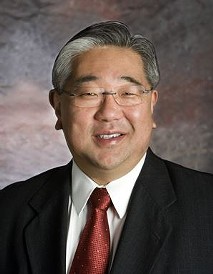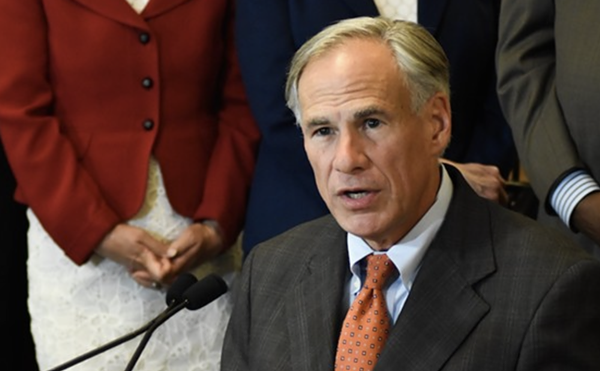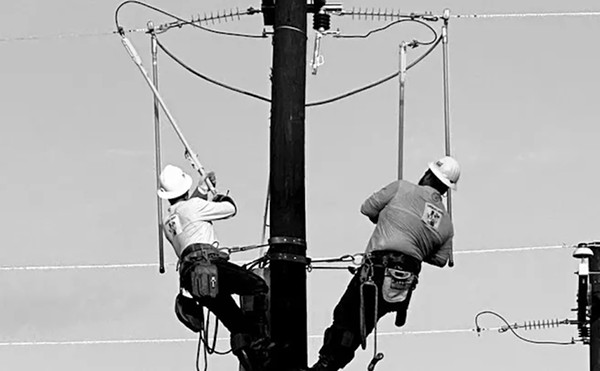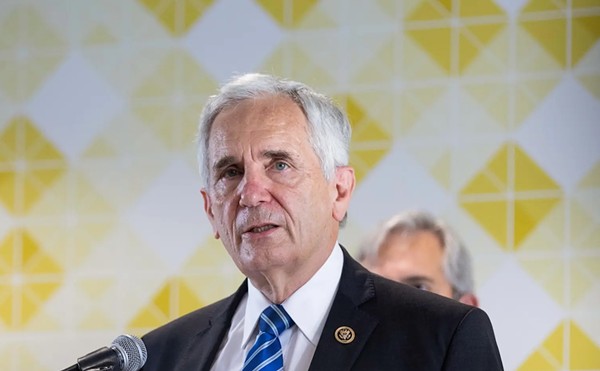On Caleb Pitts’ 18th birthday, two letters were delivered to his Comal County jail cell. One was from his foster mother, Elaine, who’d watched him dart in and out of juvenile detention for years. The other was from the state of Texas, informing Pitts that he had officially become an adult.
Suddenly, after 11 years in the state’s foster system, 20 foster homes, dozens of forgotten schools, a blur of paperwork and a lifetime of trauma, Pitts was on his own. Sitting alone in the cold, familiar cell, he couldn’t have felt less prepared.
Pitts was plucked from his home and put into state custody when he was seven years old, after his meth-addicted mother was sent to prison (his absent father was already homeless, somewhere). The state immediately separated Pitts from his three biological brothers, and the trauma left Pitts with uncontrollable anger issues — issues few foster parents could tolerate. So, instead of living with a family, Pitts spent the majority of his childhood living in prison-like facilities for kids with “behavioral issues,” alongside other heavily-medicated, equally pissed-off boys. It was unusual for a kid to leave these “homes” without a criminal record.
Pitts is one of the 1,180 kids who “age out” of Texas’ foster care system each year — children in state custody who are essentially pushed out the door with a
birth certificate, a few bucks, and serious trust issues. Many leave with undiagnosed mental health problems, often linked to the sexual, physical, or emotional abuse sustained in different foster homes. The few transitional tools the state gives foster kids are outdated, unrealistic, and pushed on them without context. With little preparation for the adult world, hundreds of these kids quickly slide into chronic homelessness or incarceration. Some might return to an abusive household or start one of their own.
Texas knows it’s a terrible parent. Numerous court cases, leaked state documents, and now a federal lawsuit underscoring the severity of the state’s neglect have officials clamoring for reform. But long-time foster advocates have heard this before — and know a successful overhaul of the state’s gargantuan Department of Family and Protective Services would take years.
In the state’s absence, local organizations and agencies are working to cobble together some kind of realistic safety net to catch their community’s most vulnerable adults before it’s too late. It’s a net that still has many holes.
Pitts, now 23, should actually be considered a foster care success story. He’s working part-time, taking business classes at San Antonio College, off drugs, pays rent on time, and only has the occasional run-in with the law. He had to do most of this without the state’s help. The majority of kids Texas has chewed up and spit out into adulthood, including Pitts’ biological brothers, face a much darker reality. These are the children Texas has raised.
For as long as she can remember, Jessica Urias has always been on some kind of medication. Her biological mother fed her sleep aids and adderall to keep her quiet from age five, threatening to punch her daughter when she bothered her. When DFPS shuttled her into foster care at age ten, Urias says doctors just added more prescriptions, antidepressants and bipolar medication.
“I don’t remember a lot of that time,” she said. “I lost a lot of weight, because the pills make me sick.” If her foster parents knew she wasn’t eating, they’d think she was trying to get them in trouble with DFPS, Urias said. So she hid it from them.
Rampant overmedication is just one of the many pieces of the Texas foster system U.S. District Court Judge Janis Jack condemned in her blistering 2015
ruling on DFPS failures. Texas’ 28,000 wards of the state, she wrote, “have been shuttled throughout a system where rape, abuse, psychotropic medication, and instability are the norm.”
According to her ruling, this system had gone unchecked for more than 20 years, leaving behind a generation of troubled adults in its wake.
“It is widely recognized that foster youths who age out generally experience poorer life outcomes,” Jack said.
This ruling was triggered by Texas’ refusal to settle a 4-year-old lawsuit from a national child advocacy group that claimed DFPS violated children’s rights. The 12,000 foster children in permanent state custody had been “doubly traumatized,” attorneys argued: “First by the abuse and neglect that brought them into foster care, and second by their treatment at the hands of their state
custodians.” They spoke for dozens of foster children who’d been raped, hog-tied, suffocated in closets, and severely beaten in foster homes.
Then-Attorney General Greg Abbott, however, contended that the state isn’t “liable for the psychological well-being and emotional development of every child in foster care.”
Jack saw things differently. She immediately assigned two child welfare experts to investigate the tangled foster care system and present recommendations to the state. True to form, Texas officials rejected the federal interference, calling the 56 recommendations “impractical” and unnecessary. Texas could take care of itself.
But more than a year after her original ruling, little has changed.
While Texas has yet to suggest its own comprehensive solution, DFPS did approve a substantial salary boost for the state’s notoriously overworked social workers.
“I think the state, in all fairness, has not had the time and resources to apply to the problem,” said Katherine Barillas, the director of child welfare policy at One Voice Texas — a Texas nonprofit that advocates for public policy issues.
While Texas has yet to suggest its own comprehensive solution, DFPS did approve a substantial salary boost for the state’s notoriously overworked social workers. But without expanding the number of salaried workers, Barillas doesn’t see the point.
“We need a dramatic investment in these workers to ensure the kids get any attention. The change we’re talking about is massive. We need to change the entire system. Even if one part is broken, we’ll fail thousands of these kids,” Barillas said. “We can’t just implement one thing and walk away.”
Doing so would only continue the state’s vicious cycle of neglect — one best illustrated by Judge Jack’s ruling.
“Children ...suffer abuse and neglect that is rarely confirmed or treated, are shuttled between placements—often inappropriate for their needs—throughout the state...are medicated with psychotropic drugs, and then age out of foster care at the Intense service level, damaged, institutionalized, and unable to
succeed as adults,” wrote.
“Foster children often age out of care more damaged than when they entered.”
Urias learned to never get too comfortable in a foster home, or too attached to her foster family. She never knew when a family would decide she was too much work, or would simply dislike her, and give Child Protective Services a call.
“I had been rejected by so many families I started to expedite the process in every new home,” she said. “I knew how to push my parents enough to make them put in their 30 day notice [to have her removed by CPS]. I always felt like an inconvenience. I just wanted to get it over with.”
Her nomadic living situation isn’t unusual. According to 2015 data, foster kids who age out of the system in Bexar County have lived in an average 6.8 homes. In some Texas counties, it’s closer to 15.
Not able to find love from these state-selected families, Urias created her own. She became pregnant at 16, eager to give her baby the parental love she
never received. But shortly after giving birth, the state put her daughter up for adoption. This is a familiar cycle for DFPS. According to a 2012 survey of former foster youth, 10 percent of Texas’ foster kids have given birth
to or fathered a child before turning 18. And more than 50 percent of foster youth who age out of the system have children before they’re 20 (nationally, only 30 percent of young adults get pregnant before 20).
“Every girl I know who’s left the system either already had a kid or immediately got pregnant,” Urias said. “You have to understand — we’re children. We’ll do anything to give or get love. And that’s what a baby is for us.”
Seventy percent of those kids are funneled back into the foster care system. These numbers have inspired Texas lawmakers to mandate that DFPS start tracking just how many girls become pregnant while in foster care. The state’s first annual report will come out next month.
After losing her baby, Urias spiraled into a deep depression, one that couldn’t be solved with just more meds. Two weeks before aging out of the system, she
tried to commit suicide.
“No one wanted me,” she said. The emotional damage the foster system had inflicted on her left Urias with little hope for the future.
Pitts managed to hop through 20 different foster homes from the time he entered the system, at 7 years old, to when he aged out. But unlike Urias, he spent a lot of his childhood living in what the state calls a “Residential Treatment Center,” a facility for foster kids with “serious emotional disturbances or mental health issues.” Pitts, who had been traumatized when DFPS separated him from his three biological brothers, would tear apart foster homes when he was upset — punching walls, tearing down doors, smashing anything in sight. At one point, he was on nine medications all at once (“like a lab rat,” he now says), but nothing worked. In Texas’ eyes, RTCs were the answer.
When Pitts describes life in the RTCs, he’s basically describing a prison.
“You’re in close quarters with a lot of angry guys,” he said. “If you didn’t fight, you didn’t survive.”
He was supposed to be under constant supervision — a “perk” of the RTCs — but rarely felt like the staff were looking out for him.
“When we’d fight in the halls, it was like a gladiator match. We’d get bloody and beat up and the staff would just watch,” he said. “They wouldn’t do anything.”
In some RTC campuses surrounded by barbed wire, the foster kids would go to school and live alongside kids serving time in juvenile detention. The state didn’t differentiate between the two. It’s no surprise, then, that Pitts spent his teenage years flitting in and out of detention — mostly for fights and selling meth. After aging out, Pitts was diagnosed with Post-Traumatic Stress Disorder from the trauma he’d sustained while in the state’s RTCs. Some 30 percent of all Texas foster kids leave the system with a PTSD diagnosis.
Pitts says he easily could have joined the thousands of other foster kids who graduate to prison after they age out — that is, if he didn’t have a foster mom rooting for him. According to state statistics, some 11 percent of Texas’ foster youth are incarcerated by the time they turn 20. To him, jail was a familiar setting, a place where someone else could continue to make all of his decisions for him.
“The foster mentality is pretty similar to the prison mentality,” he said. “It felt like home.”
Stop by the San Antonio PALS center (short for Preparation for Adult Living) on a weekday afternoon, and you’ll find a few teens tapping away along a wall of computers or slumped into a couch, watching 2 Fast 2 Furious on a flatscreen TV. You’ll also find Jose Chapa, the head coordinator for DFPS’ Region 8 — a 28-county swath of South Texas with San Antonio as its headquarters.
“I’m the first to admit that it’s a tough age group to work with,” said Chapa, who’s been working with foster teens for over a decade — and is what some
local youth advocates call “a beacon of hope.” To successfully do his job, he said, he’s become half guidance counselor and half parent.
“If we help them too much, they’ll expect us to help them with everything,” he said. “If we give them too little, they’ll fail.”
Chapa and his eight coworkers are responsible for connecting all of Region 8’s foster youth with resources that will help them age out of the system
with ease. Their main job is to conduct the PALS course, a voluntary, week-long life skills class for 15-year-old foster kids where they learn how to write
a check, rent an apartment, or make a resume. This class, offered two years before they age out, is how the state prepares kids for adulthood.
Barillas said the PALS program hasn’t changed much in the past decade — and it’s far from adequate.
“This shouldn’t just be a week in a classroom, this should be a program built on consistent, age appropriate experiential learning,” she said. “Teach
them to cook, take them to a bank, go to a laundromat. You can’t expect this one class to turn them into an instant adult when they age out. I mean, really, who still writes checks?”
Urias, who attended the PALs course, says she has absolutely no recollection of what she was taught. “I was 15, what do you expect?” she says.
Granted, PALs connects kids with other resources meant to soften the blow of adulthood — and on paper, they seem pretty fantastic. But, according to foster
advocates, they come with problematic caveats.
By law, the state of Texas must cover in-state college tuition costs for any former foster youth. Which sounds great, if you assume a foster kid would
be prepared to enter college after what is often an inconsistent and incomplete education. In reality, less than half of the kids who age out of the Texas foster
program each year even have a high school diploma.
“Even if they cover tuition, who will pay for the dorms, the text books, or the transportation? It’s unrealistic,” said Dr. Harriett Romo, the director of UTSA’s Child & Adolescent Policy Research Institute. “Many do express the desire to go to college, but don’t have the proper support system. Nobody is there to help them.”
On average, only 4 percent of former foster youth have earned a 4-year college degree by the time they’re 26 — compared to 36 percent of the general
population by that time.
Thanks to legislation Congress passed in 2009, Texas is required to offer extended housing and care to kids aging out of the foster system. In Texas,
these “Supervised Independent Living” facilities give 18-year-olds an apartment-like home with social workers on-site to ease them into independent living.
Residents can easily get help searching for work, applying to college, and perfecting other “life skills” like buying a car or signing up for health insurance.
But Texas only has nine of these SIL facilities with varying capacity—the largest location offers 34 rooms (the smallest can house eight). At best, Texas’ SIL program could only house 10 percent of kids aging out each year. Chapa says the wait list is so daunting it can take some kids up to two years to get in.
So what happens when aged-out foster kids can’t get into supportive housing? Chapa says he has to send them to a local homeless shelter.
Urias was homeless for the first three months after she turned 18. Thankfully, an older cousin let her move in — but not all kids have that kind of fallback. A
whopping 37 percent of Texas foster youth report being homeless at least once after leaving foster care. “We’re the parent, the state’s the parent, and we’re letting them live like this,” Barillas said. “How would state lawmakers feel about someone’s biological parents treating their kids that way?”
Other state programs in California and Connecticut have rolled out an even more transitional housing program for foster kids, allowing them a few smaller
steps even before living in a supervised housing unit. This is a model Texas should follow, Barillas says. “In Texas, youth go from one setting to being on their own or living in Supervised Independent Living — which may be too big of a leap to independence for some.”
Child advocates unequivocally agree on one obvious solution to Texas’ poor parenting: Mentorships. And the only person in Bexar County working to connect foster kids with mentors is Elaine Hartle.
Pitts said he’d still be behind bars if it wasn’t for Hartle. Hartle was Pitts’ last foster parent he had before DFPS passed him through the RTC system.
Even after Pitts punched holes in her walls and threatened her safety, forcing her multiple times to call the police, Hartle stayed by his side. It was Hartle
(and her husband) who ultimately convinced Pitts to clean up his act.
“She’d send me letters in jail and they’d visit me whenever they could,” Pitts said. “They cared about me — and I didn’t want to ruin their life. So I went to rehab and got my GED.”
The struggle she went through to raise Pitts, an angry teenage boy already hurt by the foster system, motivated Hartle to help more kids left behind by
Texas’ failed parenting.
“Imagine your child’s going off to college,” she said.
“You give them a big hug and a little money and say, ‘We wish you the best but you can never come back or call. Good luck.’ That’s, essentially, what Texas is doing.”
Hartle created the THRU Project — a nonprofit connecting local foster teens to volunteer mentors — to combat this cycle. Now five years old, THRU has
connected some 70 foster kids with more than 100 adult mentors in the community who help them navigate adulthood — whether that’s going with them to a car dealership, helping them finish school, or just being an
ear on the other end of the line.
“When you’ve never been allowed to make your own choices in life, it’s impossible to start from scratch,” Hartle said. “You quit planning for the long term when you move every six months. Mentors can see further ahead
than these kids, and steer them in the right direction.”
Her main goal is to help kids “find a better normal,” whatever that may look like.
In the Bexar County children’s court system, judges wish this “normal” was a state mandate.
“The success stories are when I see someone connect with a kid — whether it’s a THRU mentor, an attorney, a CASA representative, or a judge,” said
county District Judge Peter Sakai. “But we don’t have enough of those people in our community.”
Sakai has worked with foster children in the county courts since 1995 — and he’s seen far fewer success stories than he would have liked. He’s come to the
conclusion that his work, placing at-risk children in foster care, is far from a cure-all solution.
Sakai recalls one particular case that best illustrates this problem. The state was taking away a young couple’s baby, after they both failed drug rehab
programs and denied needed mental health care. Both parents were former foster kids. As he remembers it, the child’s father said, “You took me away from my parents when I was three, and nobody ever gave a shit about
me. What do you expect? You think you’re fixing things, but you’re just making it worse.”
“I realized, he’s got a point,” Sakai said. “This guy got screwed by the foster care system. He should have fought harder for his kid — but he didn’t know how to. And that’s our fault.”
Sakai has little trust that the state will build a reliable safety net for these young adults anytime soon. Instead, he’s urging communities to care for their own. “We need local solutions to make up for the state’s tenuous safety
net,” he said. “There are all these little ways we can make our own safety net, right here. It just requires a lot of cooperation.”
In fact, the most comprehensive, bipartisan bill filed in the state legislature — meant to reform DFPS — suggests the state do just that. Under the proposed
law, Texas would coordinate with regional nonprofits and child welfare groups to “increase child safety, placement stability, and permanency.”
Pitts never imagined he’d go to college. He never thought he’d have his
own apartment. He definitely didn’t think he’d have a shot at becoming a
realtor — the main reason he’s getting a business degree.
“I didn’t think I had a future,” he said. Sure, he still struggles with PTSD-fueled outbursts of rage, and Hartle still isn’t surprised when she gets a call from the cops.
But Pitts comes from a generation of foster kids thrown into a system that, according to the courts, has done “more harm to our children than good.” The
fact that he found a pathway out of incarceration or homelessness or addiction appears to exceed state expectations. He’s one of the lucky ones — something
he’s reminded of whenever he hears an old friend has been sentenced to decades behind bars or that his biological brother is still struggling with drug addiction.
Just a few months ago, Pitts and Hartle walked by the Greyhound station in downtown San Antonio. Pitts paused. Two people sitting near the station looked familiar — both were around his age and both looked like
they lived on the streets. He went up and talked to them, and confirmed his suspicion: they were his former foster siblings. One was on some kind of drug, he told Hartle, the other was working as a prostitute to make ends
meet. Both were homeless.
“Damn,” he said, as they continued down the sidewalk. “That could have been me.”




















